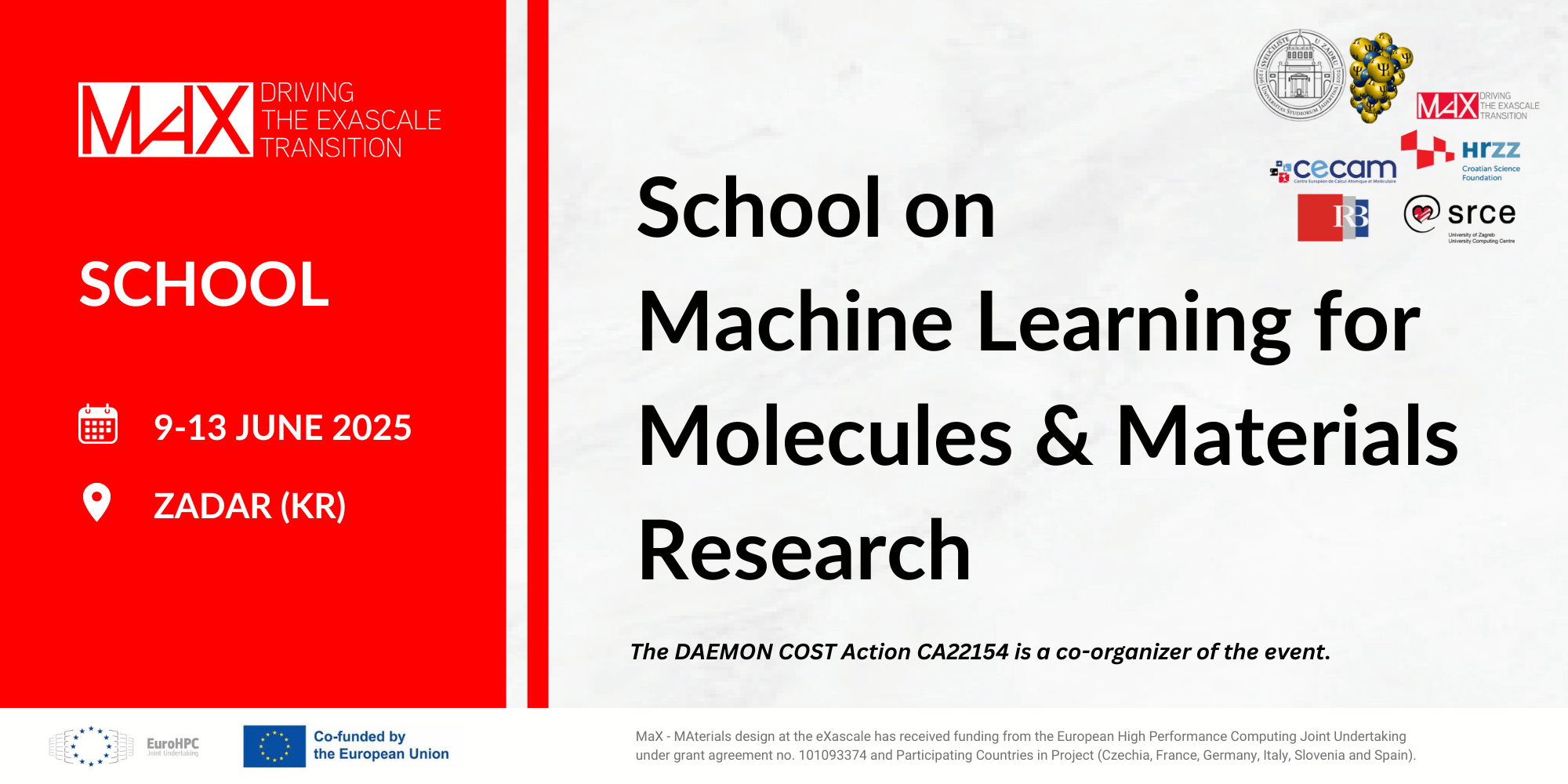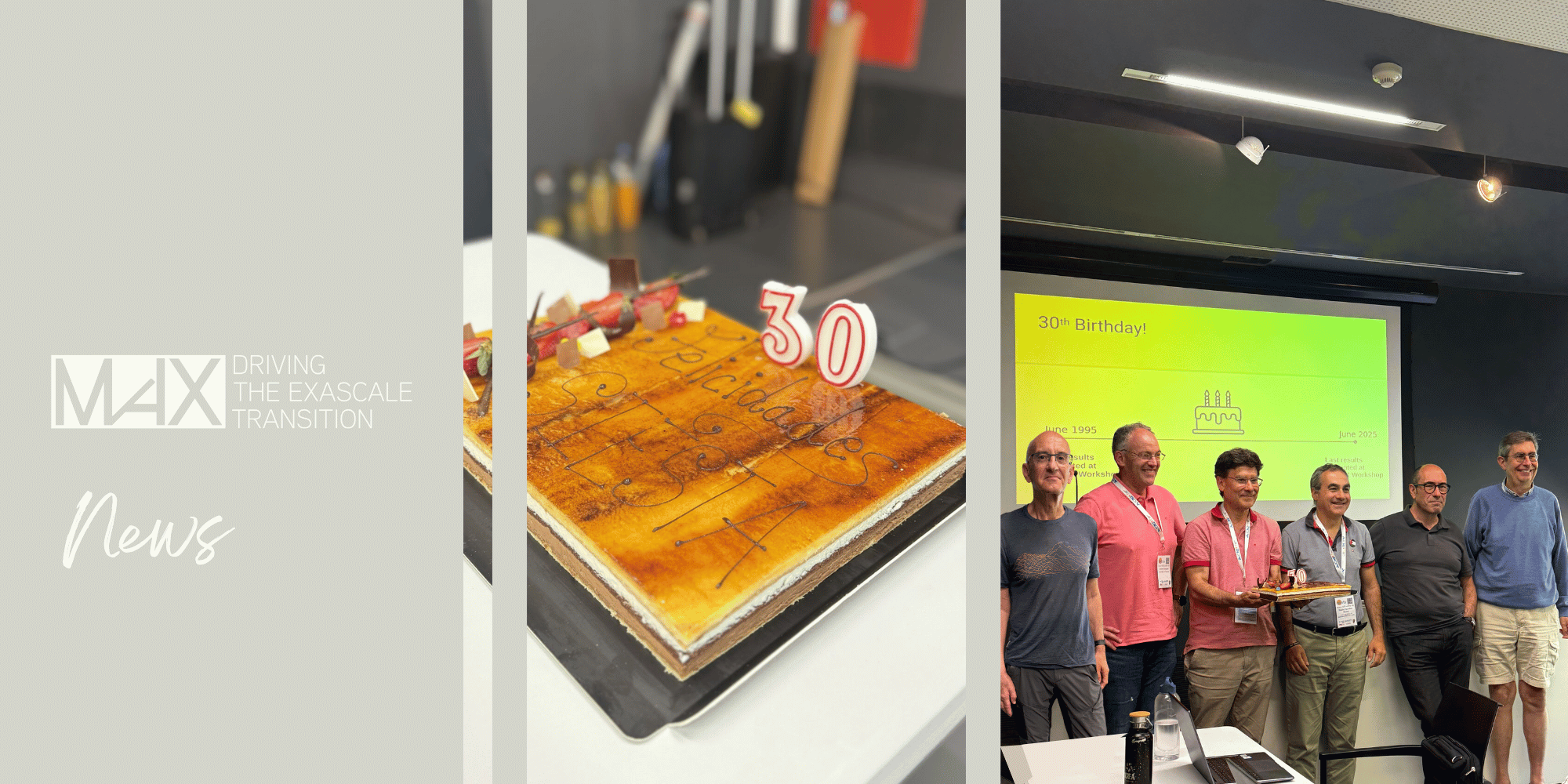Advanced SIESTA Workshop: A Successful Showcase of Materials Simulation
Between 2-5 June, 2025, MaX Centre of Excellence co-organized the Advanced SIESTA Workshop in Barcelona, bringing together researchers and experts to explore machine learning, high-performance computing, and emerging applications in density functional theory.
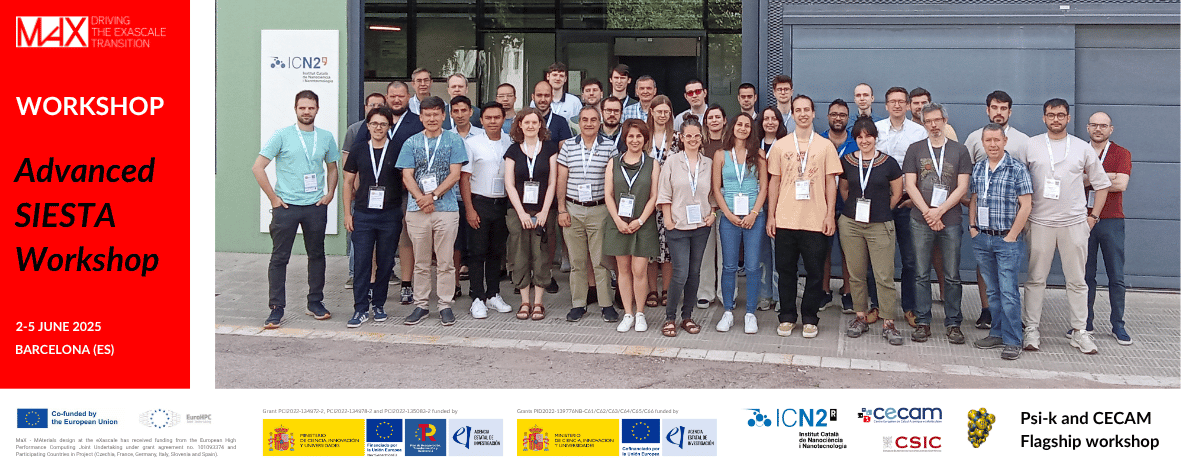
The Advanced SIESTA Workshop, co-organized by MaX Centre of Excellence for Materials at the eXascale, took place from June 2 to 5, 2025, at the Catalan Institute of Nanoscience and Nanotechnology (ICN2) in the Barcelona area. During the four days of the workshop, researchers from across Europe and beyond gathered to exchange knowledge, discuss new ideas, and receive hands-on training on advanced uses of the SIESTA method in computational materials science.
This school represented a key step for MaX, as it empowered the scientific community to fully exploit exascale computing for materials discovery. The event provided a platform to showcase the ongoing progress in simulation tools and promote best practices in sustainable, interoperable, and scalable computational workflows. In addition, the school occurred during a special occasion, as SIESTA celebrates its 30th anniversary this year.
SIESTA is one of the MaX Lighthouse codes for large-scale materials simulations using density functional theory. Throughout the workshop, participants explored its application to electronic transport, magnetism, superconductivity, electrochemistry, thermal properties, and its growing integration with machine learning techniques and high-performance computing architectures.
By bringing together leading experts and early-career researchers, the workshop strengthened collaboration within the materials modeling community and reinforced the relevance of high-performance simulation tools in driving innovation across fields such as clean energy, electronics, and catalysis.
-
Looking to revisit the hands-on sessions?
Explore the tutorials at Advanced SIESTA Workshop 2025: Sessions unfolded -
Want to learn more about the event?
Discover full details at Advanced SIESTA Workshop 2025
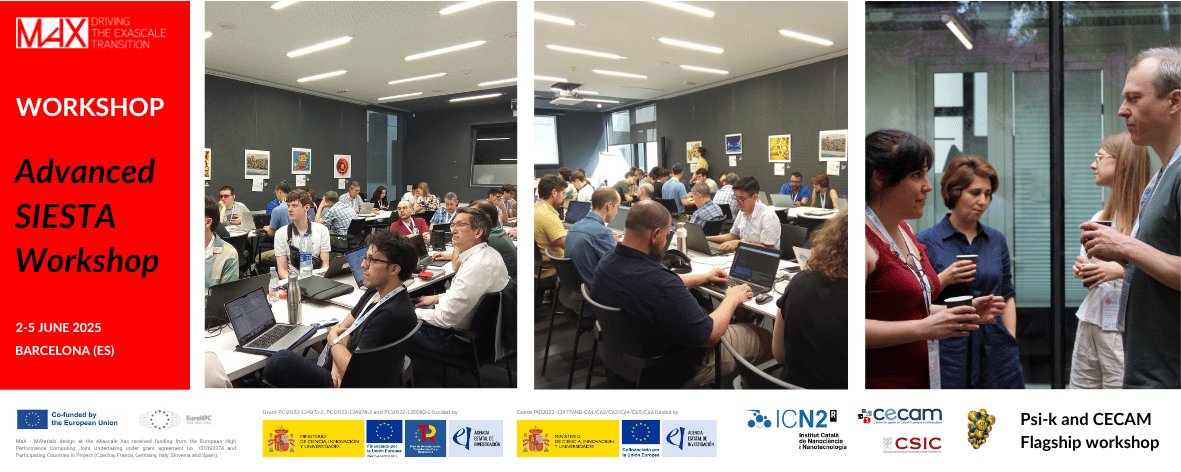
Program Highlights
Monday, 2nd June
The workshop began with registration and a welcome session by Dr. Federico Pedron (ICN2). The first hands-on session focused on electrochemical properties using TranSIESTA and QM/MM, led by Dr. Ernane de Freitas Martins (ICN2) and Dr. Pol Febrer (EPFL). After a coffee break, Prof. Aran García-Lekue (Ikerbasque & DIPC) presented a showcase on electronic transport.
Tuesday, 3rd June
The day opened with a tutorial on postprocessing using sisl and controlling SIESTA externally with LUA, presented by Dr. Nick Papior (DTU). This was followed by a hands-on session on magnetism, from spin-orbit coupling to TB2J, led by Dr. He Xu (U. Liège). In the afternoon, Arnold Kole (U. Utrecht) introduced superconductivity in a tutorial session. Later, Prof. Aldo Romero (West Virginia University) gave a showcase on DMFT. The day concluded with a social dinner in the evening.
Wednesday, 4th June
The morning sessions began with a tutorial on anharmonic phonons and thermal conductivity using TDEP and SIESTA, delivered by Prof. Matthieu Verstraete (U. Utrecht) and Dr. Roberta Farris (ICN2). Dr. Miguel Pruneda (CINN-CSIC) then led a tutorial on electron-lattice interactions. In the afternoon, Dr. Bogdan Guster (U. Napoli) presented a session on the Lindhard Response Function and Fermi surface nesting. Later, a roundtable discussion on SIESTA workflows and interoperability followed. The day also included a poster session and concluded with a presentation given by Dr. Alberto García (ICMAB-CSIC) on how to use SIESTA in exascale computing.
Thursday, 5th June
The last day of the workshop began with a tutorial on accelerating molecular dynamics in SIESTA using machine learning, presented by Dr. Pol Febrer (EPFL). This was followed by a roundtable discussion on the role of SIESTA in future ML-based technologies. Later in the morning, Dr. Federico Pedron (ICN2) presented recent and upcoming developments in SIESTA. The workshop concluded with an open discussion on the challenges and future directions of high-throughput calculations.
Poster session
As part of the event, a poster session was held to showcase a variety of outstanding research contributions of the workshop participants. The evaluation committee assessed posters for their clarity, originality, and scientific impact.
- First place went to Martin Irizar Landa for his presentation on "Ab initio insights into the electronic properties of 1D and 2D porous carbon-based nanoarchitectures."
- Second place was awarded to Sara Navarro Rodríguez for her poster titled "Electrolyte dynamics under electrostatically induced electrode charges: implementation and usage as a starting point for TranSIESTA calculations."

What attendees are saying
« Since I teach, I can’t use paid software with my students, so I rely on open-source alternatives. I teach in Peru, and from my experience, two key takeaways from this workshop are: first, that students now have access to interactive tools like notebooks, which enhance their learning, especially during the initial classes; and second, the visual interface is a major advantage. With students, every extra technical step, whether it’s installing the right version of PyTorch or configuring their environment, can slow down their learning. That’s why having accessible, interactive tools makes a big difference in teaching machine learning effectively. » - Christian Solis Calero (Universidad Nacional Mayor de San Marcos, Peru)
« Through the workshop I gained hands-on experience with the new advanced methods and external libraries offered by SIESTA 5.4. I learned how to enhance simulation and modelling capabilities, from transport to machine learning approaches, to efficiently model complex systems and materials. » - Maria Camarasa Gomez (Centro de Física de Materiales CFM/MPC, UPV/EHU-CSIC, Spain)
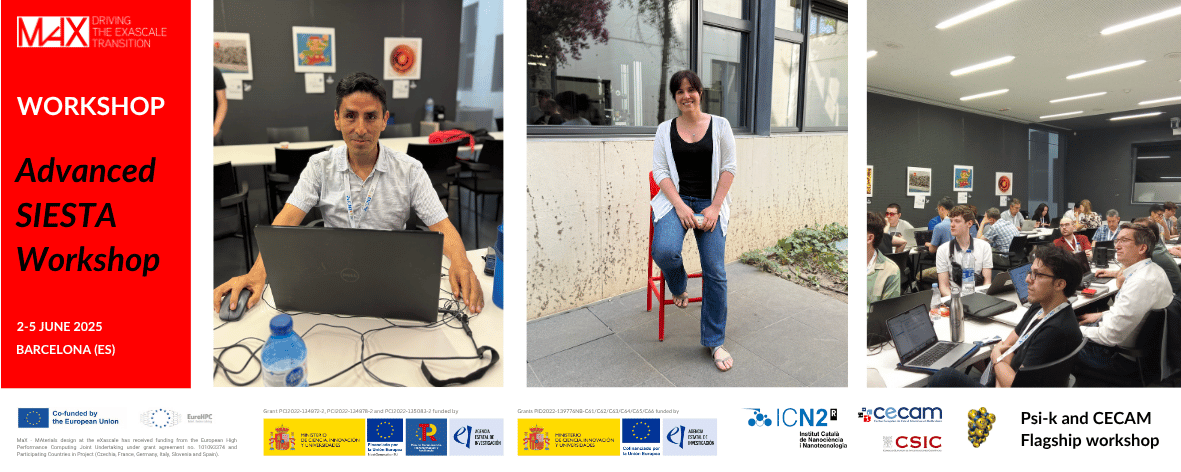
Acknowledgement
The event was part of the CASTIEL2 "Training Sprint" and was proudly supported as a Psi-k and CECAM Flagship Workshop. It was made possible through the collaboration of the MaX Centre of Excellence, ICN2, and CSIC. We thank all participants and the organizing committee (Catalina Coll, José María Escartín Esteban, Roberta Farris, Federico Pedron, and Miguel Pruneda) for their exceptional effort and support.
About SIESTA
SIESTA is a widely used open-source code for first-principles simulations based on density functional theory. Designed for efficiency and scalability, SIESTA enables researchers to simulate complex materials and interfaces with thousands of atoms. Its rich ecosystem of interfaces and compatibility with machine learning tools ensures its continued role in cutting-edge materials science.


